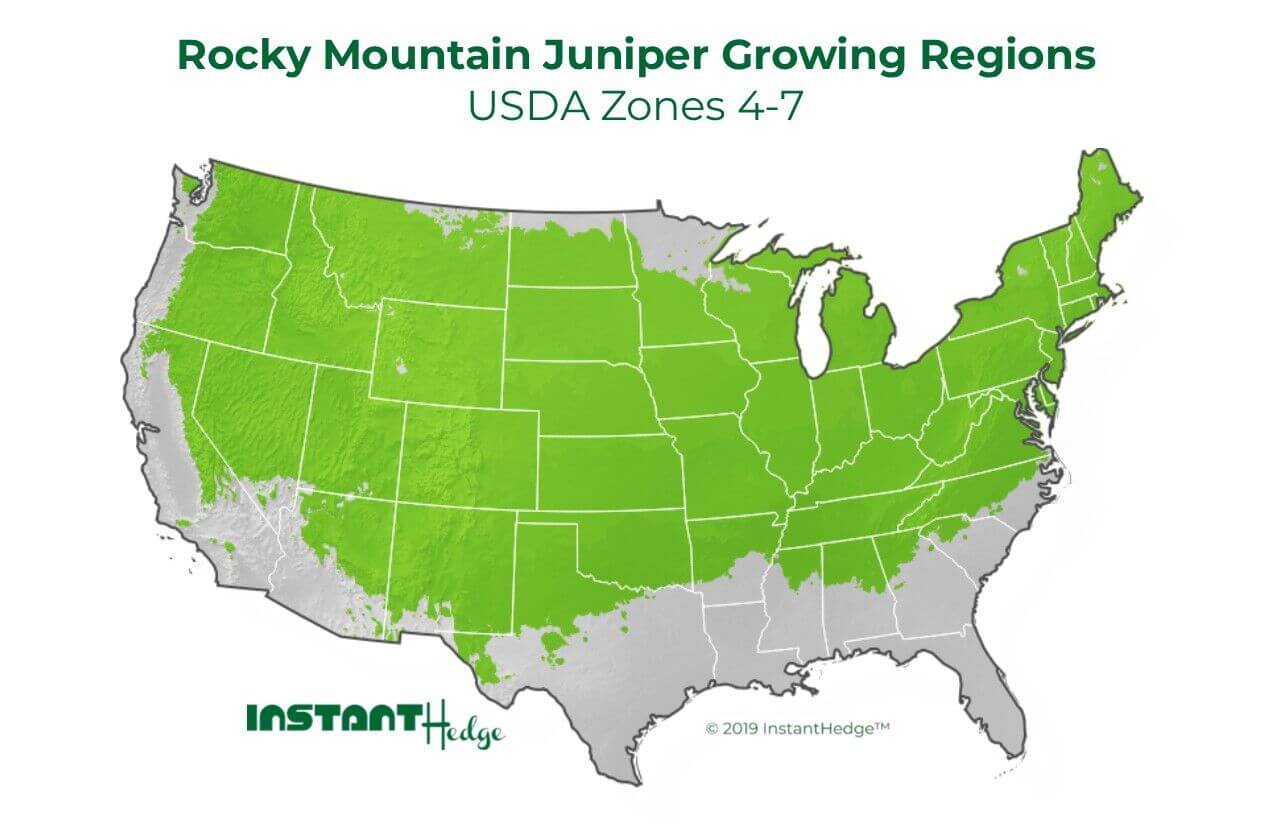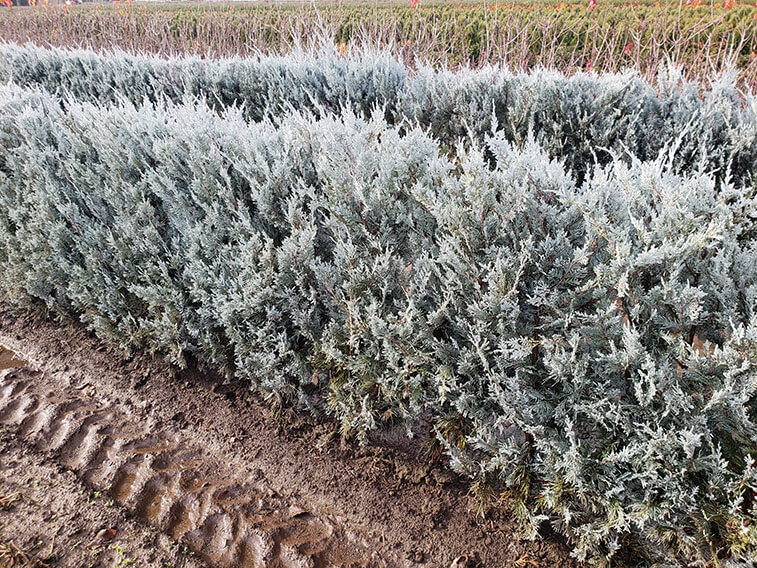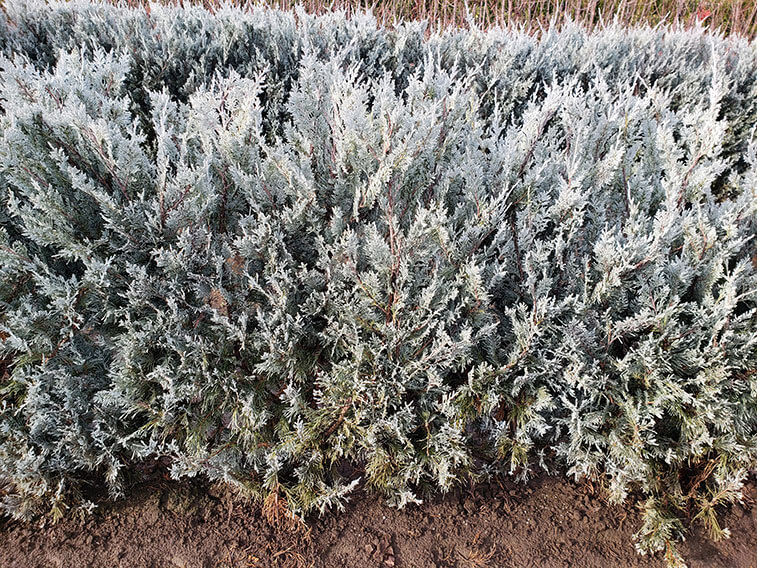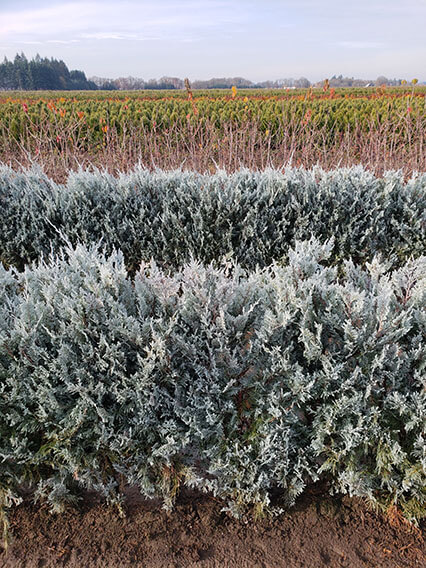ROCKY MOUNTAIN JUNIPER QUICK GUIDE

- Bright, powder blue foliage that persists all year
- Deer resistant
- Cold and drought tolerant
- Juniper Wichita Blue makes a stunning low hedge or privacy hedge
JUNIPER WICHITA BLUE HEDGE DETAILS
In its native habitat, Rocky Mountain Juniper is often found in rocky high altitude foothills, so it can tolerate fairly extreme climates. Typically, Rocky Mountain Juniper takes a wide pyramidal shape, has a distinctive shedding red-brown bark and has deep green needles on thin, sinewy branches. In the wild, the tree can grow up to 50 feet tall and 20 feet wide. Wichita Blue Juniper Hedge is a variety with bright blue foliage and a slower growth rate. A mature size, without pruning, would be 10' tall by 6' wide. With Juniper Wichita Blue pruning as a hedge, you could keep it anywhere from 6-12' tall over the long run.
| Deer Resistance: | Yes |
| Your Hardiness Zone: | |
|
Your auto-detected zip code: Detecting...
And your zone is: Detecting...
|
|
| Sunnset Heat Zones: | 1 - 24 |
| USDA Hardiness Zones: | 4 - 7 |
| Watering Requirements: | Moderate |
| Growth Rate: | Moderate |
| Mature Size: | Up to 10’ height and 6’ width |
| Sun/Shade: | Full Sun |
| Drought Tolerance: | Moderate |
| Pest/Disease Issues: | |
| No serious insect or disease problems. Phomopsis twig blight, cedar-apple, root rot, aphids, bagworms, twig borers, webworms, scale, and spider mites are all possible. | |

Requests are verified for wholesale pricing eligibility.



